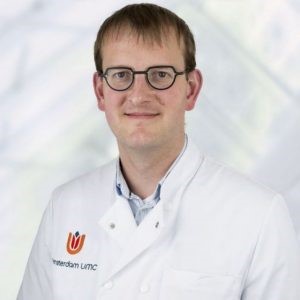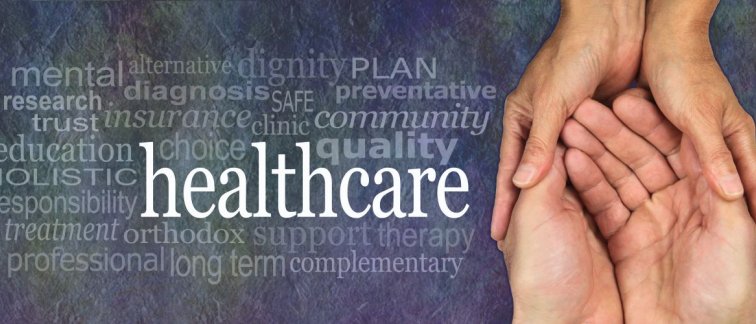Dr. Jan-Jaap Hendrickx, Head and Neck Surgeon at Amsterdam UMC, has been the leader of a 'value team' for head and neck oncology for four years. A value-based healthcare team is an improvement team around a care pathway that implements the principles of value-based healthcare. “The goal is to measurably improve care by gaining insight into what is important to the patient.”
Eefje van Kessel works as the program manager for care at Cancer Center Amsterdam, Amsterdam UMC. She coordinates collaborative projects in-house and beyond the hospital walls, as well as efforts to optimize and improve the use of data. “Healthcare is already organized around care pathways in a multidisciplinary manner, and the principles of value-based healthcare help us to bring care to the next level,” she says.
Toolbox for participation and improvement
Dr. Jan-Jaap Hendrickx and Eefje van Kessel are involved in value teams in which active listening to patients is key. A toolbox for patient and family participation has been assembled as part of the value-based healthcare program that includes Patient Reported Outcome Measures (PROMs), which are questionnaires to investigate perceived health, and focus groups.
“Every doctor is convinced they provide the best care,” says Dr. Hendrickx. “But with information from the patient, you gain more and better insight into their needs and wishes. We therefore first try to understand what is important for the patients through the focus groups, and use that as a starting point for improvement.”
Dr. Hendrickx continues: “Most patients only see the questionnaire, but some who have been invited to a focus group are aware of the entire process and the involvement of healthcare professionals.” While current patients may not realize it, patients who were treated in the past and are involved in focus groups do see the changes happening over time as a result of the value-based care program.
Taking the temperature
Questionnaires filled out prior to the outpatient consultation can help tailor treatment depending on a patient’s concerns. Dr. Jan-Jaap Hendrickx explains: “Because you provide the questions in advance, you don’t know beforehand where the conversation will head to. For example, one question is: are you afraid that cancer will come back? I usually don't discuss this with patients who are three or four years past treatment. But if they indicate that they are concerned, I can start a dialogue about it and ensure they get the care they need.” For head and neck oncology, the PROMs involve over 70 questions. Discussing all of these questions would be a lot of ground to cover, but “you quickly learn to extract the items relevant to the individual patient,” says Dr. Hendrickx. “You have to use the information from the questionnaires as a kind of thermometer.”
Value-based progress
According to Eefje van Kessel, value-based healthcare should provide more benefits than costs. “However, you cannot calculate that precisely. There is a global fraction where you divide the gains by the expenses, but we especially look at whether it really brings benefits without costing more energy from the participants.”
There has already been progress in care as a result of the value-based healthcare program. For example, information learned from focus groups has changed the consultation environment, with conversations with patients and family now taking place in a different room that is much more hospitable.
Value teams have also contributed to closer collaboration. Dr. Jan-Jaap Hendrickx:“We wanted to improve the collaboration between the different specialists and disciplines involved in the care pathway.” The value teams foster discussion about what constitutes good care and creates “synergy” within the team. “It helps to connect everyone this way. Meeting regularly is good, but also being able to simply call a colleague in the event of a clinical problem already results in better care.”
Challenges
Offering the questionnaires digitally makes it easier for most patients, but some patients are not digitally skilled. “We have these patients fill out the questionnaires at the outpatient clinic. However, we are still not receiving everyone’s feedback. There are still challenges,” says Dr. Hendrickx.
Eefje van Kessel explains that the value-based healthcare project has been running for a few years now, but still more effort is needed to integrate it into standard care and improve processes continuously. “Project support is being phased out. We are working on implementation by making investments in dashboards,” electronic aids that can show data and outcomes at a patient or patient group level at a glance. “Implementation is always complicated. At first you all go for it, but later you have to secure the new methods in your process. That is where the challenge is.” Despite these continuing challenges, Eefje van Kessel concludes that “the value teams form a solid foundation to generate traction for new developments, such as the ‘The right care in the right place’ program and the digitization of medical data.”
 Dr. Jan-Jaap Hendrickx
Dr. Jan-Jaap Hendrickx
 Eefje van Kessel
Eefje van Kessel
Adapted from ‘Waardeteams zijn een mooie basis om nieuwe ontwikkelingen te laten landen’ by Lennard Bonapart and published by Qruxx
For more information, contact cca@amsterdamumc.nl.

